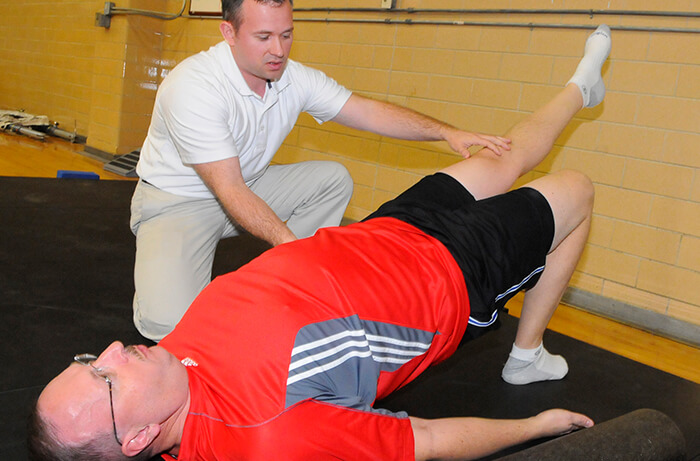

EXERCISES FOR KNEE REPLACEMENT SURGERIES

With increasing age and osteoarthritis, the knee joints which bear the maximum weight burden, tend to get worn out and inflamed; in some cases, it is severe enough to warrant surgery where the surgeon removes the eroded parts of the bones and cartilage from the knee joint and replaces them with a prosthesis. These are usually made of high-grade plastic and polymers and titanium or cobalt-chromium alloys. This surgery is being increasingly employed to repair severely painful and worn-out knee joints, with a recovery period ranging from 3 months to about a year.
The recovery process depends on the quantity and quality of physical therapy applied to the new prosthetic knee joint. It’s important to start exercising the joint as early as possible to prevent complications from blood clot formation as well as to increase the strength and flexibility in the new knee joint. It will also help in the revascularization process.
Though moving the joint would be uncomfortable and painful in the beginning, exercising it will help you get back on your feet and into your normal routine, sooner. Your surgeon or physical therapist will tell you when to start moving your joints, how much exercise to start with and how much force or pressure to use. They will guide you through the exercise routines needed to get your knees back into shape.
You will be first made to walk short distances within your hospital room, possibly with a walker or crutches; you will be told how much pressure to put on your knee. Standing comfortably and erect, you will have to learn how to walk rhythmically and slowly with the support of your walker or crutches, remembering to put the heel of the foot down first before flattening your foot. When lifting the operated leg, first lift your toes off the floor before following with the rest of the foot. Remember not to hurry, but to learn to walk straight with an even gait; as the muscle strength improves, you would be able to walk more, putting more weight on the leg, and eventually progressing to depending on a cane for aid before finally walking independently. Remember Rome wasn’t built in a day and your new joint will similarly also need time to grow strong enough to help you engage in normal activities.
Climbing up and down the staircase is an excellent way to strengthen the joint as well as improve endurance. You need to start climbing slowly with the support of the handrail; go up the staircase leading with the un-operated leg and come down the staircase placing the operated leg first. Initially, you might need a helping hand to support your climbing and descending, but with improvement in strength and endurance, you will soon be able to do it yourself.
Whichever mode of exercise you use, remember to use both legs equally to keep their strength balanced. You will most probably experience pain and/or swelling after exercising your joint – elevate your leg and apply an ice pack.














